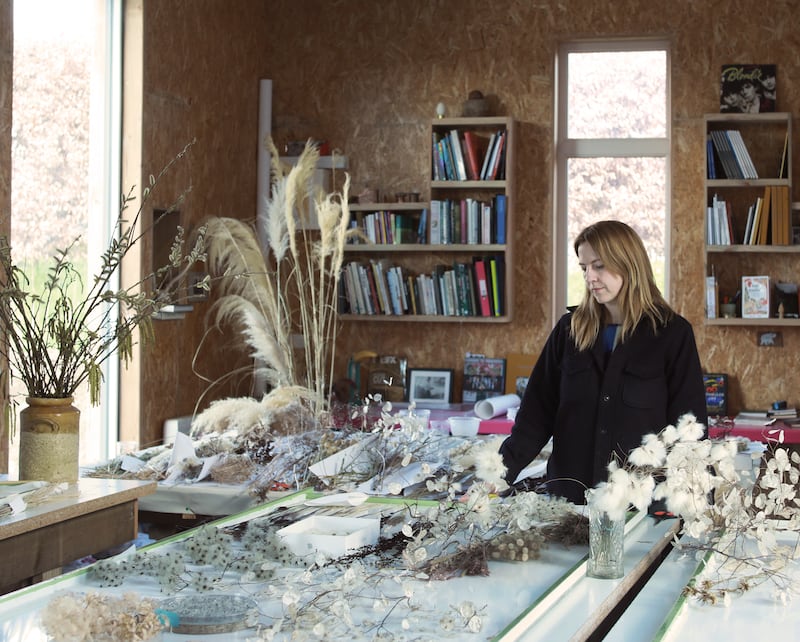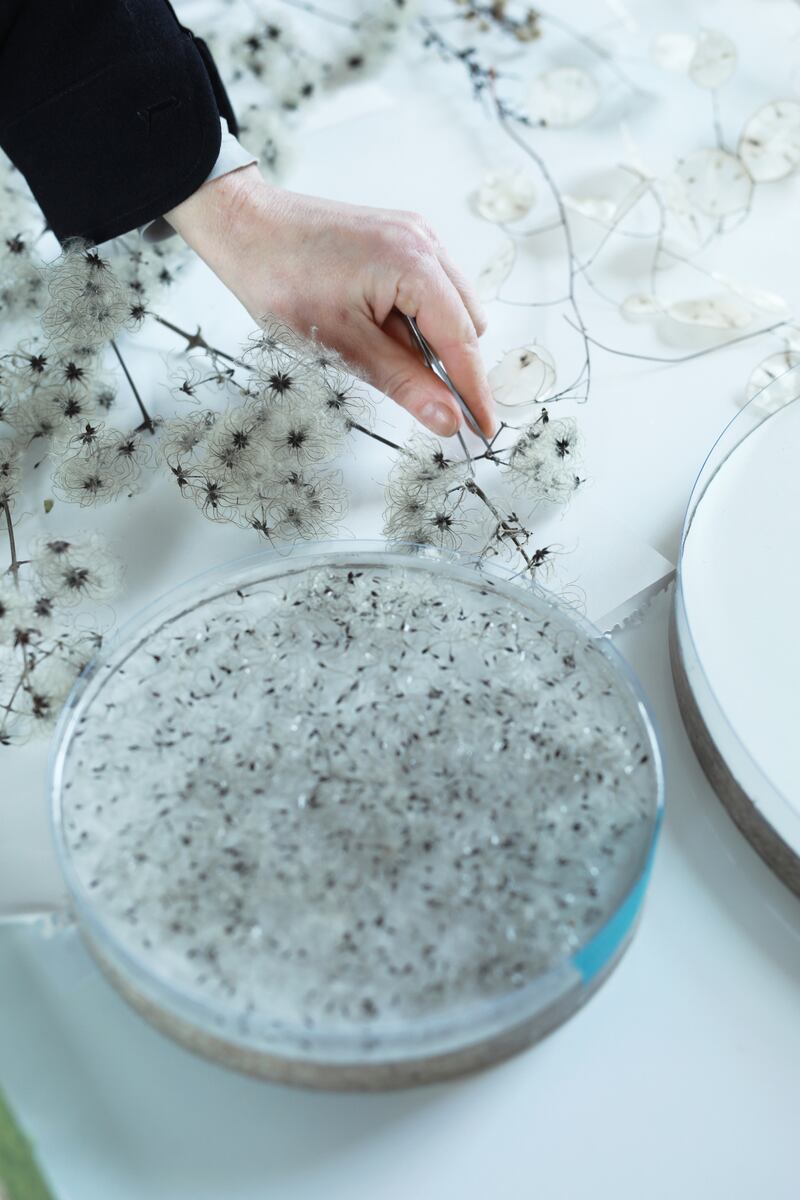Building a new studio was, for acclaimed Irish artist and furniture maker Sasha Sykes, a way of dealing with creative frustration during Covid, and an awareness of the devastating effects of climate change.
A keen amateur botanist who works closely with nature, Sykes is known for her art, which encapsulates found and foraged materials in resin.
“People are feeling concerned about the future and disappearing plants and species. During lockdown, I knew in my head I had to do something practical, as creatively, I could not focus properly, so doing a studio was a good project”, she says.
Living in Rathmines in a rented house with her husband, Tom Sykes, and with three children at local schools, she had been searching for a bigger studio space without success when Covid hit.
READ MORE
So, after four years in Dublin, the family moved back to their rural county Carlow home. Located in eight acres of woodland and farmland, with views of the Wicklow and Blackstairs mountains, the property is near Sasha’s ancestral family home, Lisnavagh. The couple had built a house there in 2009, “so after that lovely corner in Rathmines, the plus side was back to nature and space”, she smiles.
We meet in her new studio near the house, as she is putting the finishing touches to new work bound for London. Her plan for the studio was a sustainable building with a low carbon footprint using local materials and labour.
A trained architect, as well as an artist, she was clear before the project began about what was needed and was careful to address the site’s orientation, choosing the best for shelter, light and land.
Floors and foundations were carried out by local builder Patsy Lawlor – “who reuses what he digs out” – with the earth extracted used to create a large circular raised mound as a windbreak. All the cladding and structural timbers were sourced from a local sawmill – the cladding in Douglas fir was deliberately chosen for its silvering properties. The roof in corrugated steel was in keeping with the house. All the walls were lined with wool.

“I wanted to use wool as insulation because I remembered looking at the shearing in the shed at home and thinking what an incredible material it is.”
A lot of research into its use came from contact with Vincent Pierce of Sheep Wool Insulation and others, with Sykes eventually acquiring local wool from three sheep-farming friends whose fleece she collected, dagged and dried herself – it took 400 fleeces to insulate the building.

The new 90 square metre building, five metres wide by 20 metres long, sits harmoniously in the open landscape. It is large, airy and comprises three spaces – the main design area with four big tables on trestles, the heat casting room for resins and a fabrication space. Inside from floor to ceiling, the walls are in sealed OSB compressed woods and the concrete floors are painted Yves Klein blue.
The tall windows – reclaimed conservatory doors – came from a friend and were reframed in pitch pine from the Lisnavagh farmyard. Bookshelves were made from leftover timber, and though the glazing is fixed, small, shuttered windows allow further air circulation.
“The whole thing has been transformative,” says Sykes cradling Winnie, a very affectionate terrier, on her lap. “The only thing I lost was my old vegetable patch”.
The final cost of the building amounted to some €40,000, of which the timber was the most expensive component. Work began in March last year and was completed this March, and she pays tribute to the workmanship of Polish craftsman Maciej on the interior.
What is her advice to anyone thinking of doing something similar?
“The building industry puts out this image that it is impossible or very difficult to do a building project yourself, but we have access to these incredible materials like timber and wool and are actually much more capable than we realise”, she argues.


Her latest pieces now on exhibition in London are Between Worlds, a deep, low heavy circular table filled with material gathered over a year from woodlands near her studio and inspired by C S Lewis’s description of “wood between the worlds”. For her it represents “a physical expression of the role nature plays in bridging the liminal and subliminal worlds’'.
The other, Ekballium (from the Greek to discharge or throw out), is a five-panel folding screen – her biggest to date – with an abundance of exploding seed heads, grasses and dead plant material. It is a hugely impressive work, which she describes as “a meditation on nature”. Both are on display from June 20th-July 2nd at the Pavilion Gallery, Cromwell Place, London with Oliver Sears.














